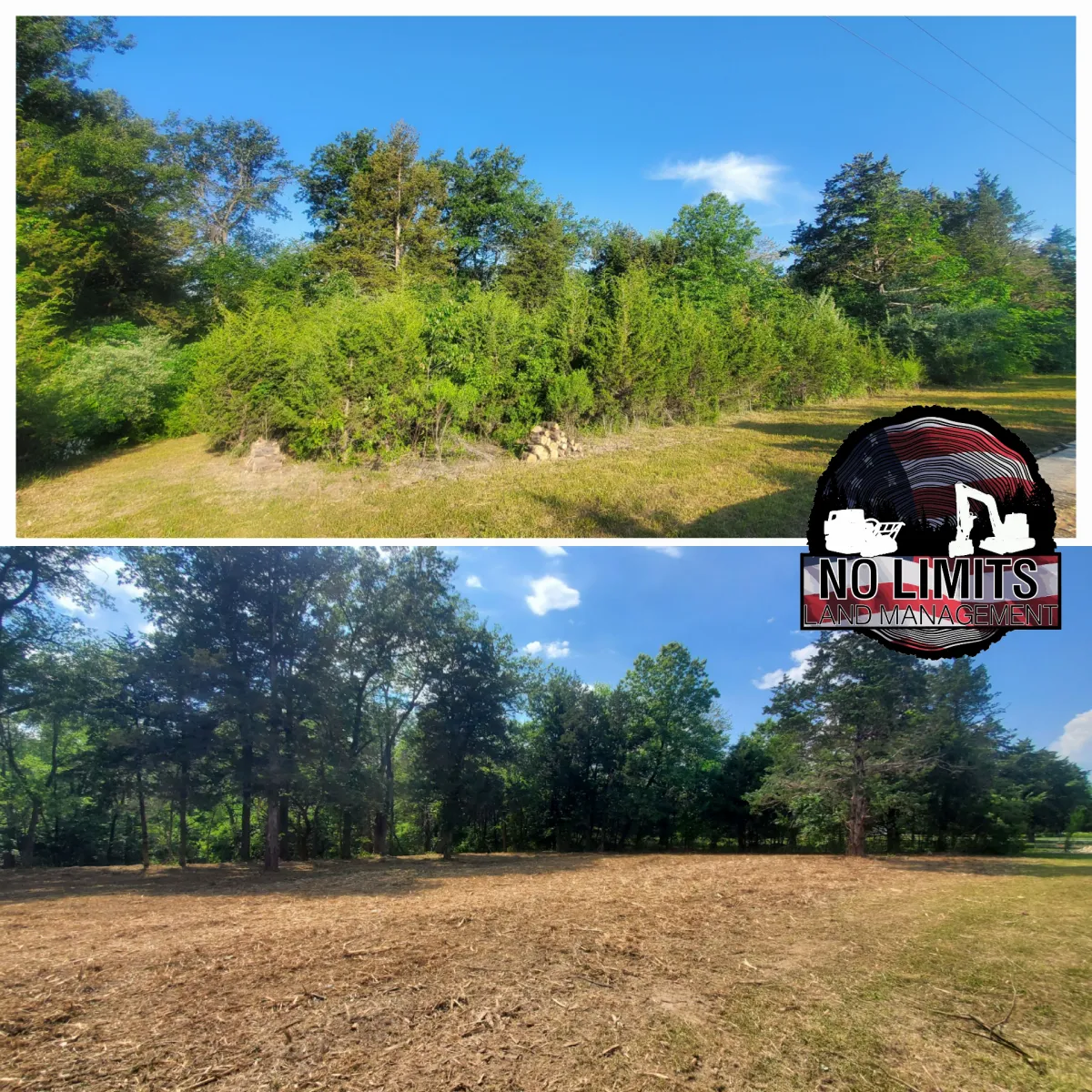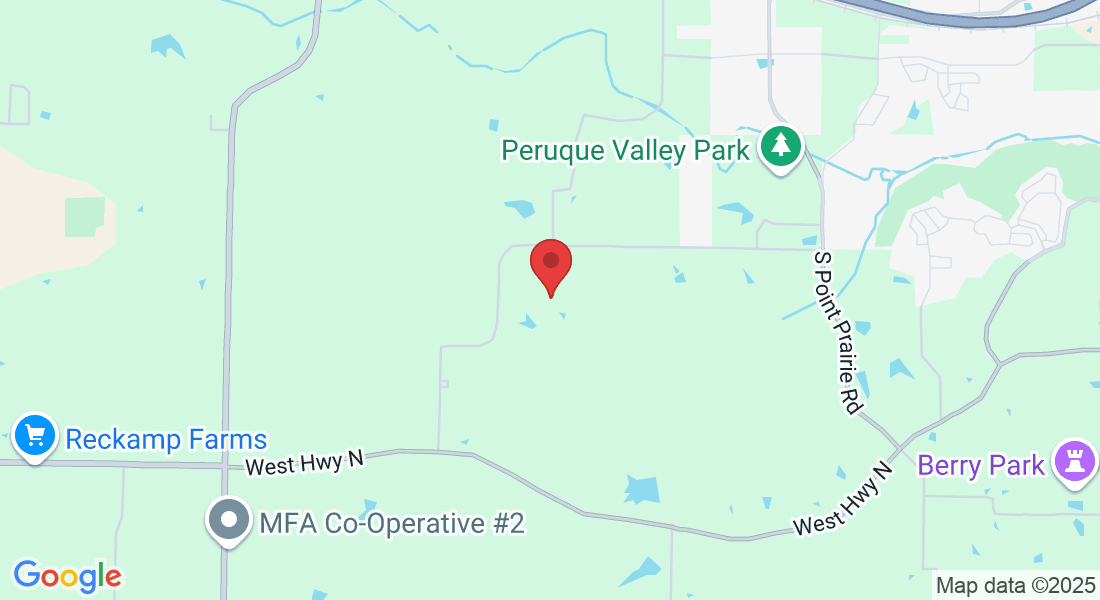News & Events

How Forestry Mulching Enhances Soil Quality: A Guide from No Limits Land Management
Forestry mulching is an innovative and eco-friendly land management practice that offers numerous benefits, one of the most significant being its positive impact on soil quality. At No Limits Land Management, we are committed to helping landowners understand and utilize the advantages of forestry mulching to improve their land. Here’s how this practice can enhance soil quality on your property.
1. Nutrient Recycling
Forestry mulching involves grinding vegetation into mulch, which is left on the ground to decompose naturally. This decomposing mulch acts as a rich source of organic matter, returning essential nutrients back into the soil. As the mulch breaks down, it releases nitrogen, phosphorus, potassium, and other vital nutrients, enriching the soil and promoting healthy plant growth. This natural recycling process improves soil fertility without the need for chemical fertilizers.
2. Soil Moisture Retention
One of the immediate benefits of forestry mulching is its ability to retain soil moisture. The layer of mulch acts as a protective barrier, reducing evaporation and maintaining consistent moisture levels in the soil.
3. Erosion Control
Soil erosion is a common problem, especially on sloped terrains or areas with sparse vegetation. Forestry mulching helps combat erosion by providing a protective layer that shields the soil from wind and water erosion. The mulch layer stabilizes the soil surface, preventing runoff and soil displacement during heavy rains. This protective cover also helps in maintaining the integrity of the soil structure, reducing the risk of landslides and sediment loss.
4. Improved Soil Structure
The decomposition of mulch contributes to the formation of humus, a vital component of healthy soil. Humus improves soil structure by increasing its porosity and enhancing its ability to retain moisture and nutrients.
5. Temperature Regulation
Mulch acts as an insulating layer, regulating soil temperature by keeping it cooler in the summer and warmer in the winter. This temperature regulation is vital for maintaining microbial activity in the soil, which is essential for nutrient cycling and overall soil health.
6. Weed Suppression
By covering the soil surface with a thick layer of mulch, forestry mulching helps suppress weed growth. Weeds compete with desirable plants for nutrients, water, and light, often leading to reduced plant health and soil quality. The mulch layer blocks sunlight from reaching weed seeds, inhibiting their germination and growth. This natural weed control method reduces the need for chemical herbicides, promoting a healthier, more sustainable environment.
7. Enhanced Microbial Activity
Healthy soil is teeming with beneficial microorganisms such as bacteria, fungi, and earthworms. These organisms play a crucial role in decomposing organic matter, recycling nutrients, and improving soil structure. The addition of mulch from forestry mulching provides a food source for these microorganisms, boosting their activity and population. Enhanced microbial activity leads to more efficient nutrient cycling and overall improved soil health.
Conclusion
Forestry mulching is a powerful tool for enhancing soil quality and promoting sustainable land management. By recycling nutrients, retaining moisture, controlling erosion, improving soil structure, regulating temperature, suppressing weeds, and boosting microbial activity, forestry mulching creates a fertile and resilient soil environment. At No Limits Land Management, we are dedicated to helping you unlock these benefits for your property. Our professional forestry mulching services are designed to improve your soil quality and support your land management goals.
Ready to enhance your soil quality with forestry mulching? Contact No Limits Land Management today to schedule a FREE Estimate and discover how our expert services can transform your land. 636-262-1970

How Forestry Mulching Enhances Soil Quality: A Guide from No Limits Land Management
Forestry mulching is an innovative and eco-friendly land management practice that offers numerous benefits, one of the most significant being its positive impact on soil quality. At No Limits Land Management, we are committed to helping landowners understand and utilize the advantages of forestry mulching to improve their land. Here’s how this practice can enhance soil quality on your property.
1. Nutrient Recycling
Forestry mulching involves grinding vegetation into mulch, which is left on the ground to decompose naturally. This decomposing mulch acts as a rich source of organic matter, returning essential nutrients back into the soil. As the mulch breaks down, it releases nitrogen, phosphorus, potassium, and other vital nutrients, enriching the soil and promoting healthy plant growth. This natural recycling process improves soil fertility without the need for chemical fertilizers.
2. Soil Moisture Retention
One of the immediate benefits of forestry mulching is its ability to retain soil moisture. The layer of mulch acts as a protective barrier, reducing evaporation and maintaining consistent moisture levels in the soil.
3. Erosion Control
Soil erosion is a common problem, especially on sloped terrains or areas with sparse vegetation. Forestry mulching helps combat erosion by providing a protective layer that shields the soil from wind and water erosion. The mulch layer stabilizes the soil surface, preventing runoff and soil displacement during heavy rains. This protective cover also helps in maintaining the integrity of the soil structure, reducing the risk of landslides and sediment loss.
4. Improved Soil Structure
The decomposition of mulch contributes to the formation of humus, a vital component of healthy soil. Humus improves soil structure by increasing its porosity and enhancing its ability to retain moisture and nutrients.
5. Temperature Regulation
Mulch acts as an insulating layer, regulating soil temperature by keeping it cooler in the summer and warmer in the winter. This temperature regulation is vital for maintaining microbial activity in the soil, which is essential for nutrient cycling and overall soil health.
6. Weed Suppression
By covering the soil surface with a thick layer of mulch, forestry mulching helps suppress weed growth. Weeds compete with desirable plants for nutrients, water, and light, often leading to reduced plant health and soil quality. The mulch layer blocks sunlight from reaching weed seeds, inhibiting their germination and growth. This natural weed control method reduces the need for chemical herbicides, promoting a healthier, more sustainable environment.
7. Enhanced Microbial Activity
Healthy soil is teeming with beneficial microorganisms such as bacteria, fungi, and earthworms. These organisms play a crucial role in decomposing organic matter, recycling nutrients, and improving soil structure. The addition of mulch from forestry mulching provides a food source for these microorganisms, boosting their activity and population. Enhanced microbial activity leads to more efficient nutrient cycling and overall improved soil health.
Conclusion
Forestry mulching is a powerful tool for enhancing soil quality and promoting sustainable land management. By recycling nutrients, retaining moisture, controlling erosion, improving soil structure, regulating temperature, suppressing weeds, and boosting microbial activity, forestry mulching creates a fertile and resilient soil environment. At No Limits Land Management, we are dedicated to helping you unlock these benefits for your property. Our professional forestry mulching services are designed to improve your soil quality and support your land management goals.
Ready to enhance your soil quality with forestry mulching? Contact No Limits Land Management today to schedule a FREE Estimate and discover how our expert services can transform your land. 636-262-1970

How Forestry Mulching Enhances Soil Quality: A Guide from No Limits Land Management
Forestry mulching is an innovative and eco-friendly land management practice that offers numerous benefits, one of the most significant being its positive impact on soil quality. At No Limits Land Management, we are committed to helping landowners understand and utilize the advantages of forestry mulching to improve their land. Here’s how this practice can enhance soil quality on your property.
1. Nutrient Recycling
Forestry mulching involves grinding vegetation into mulch, which is left on the ground to decompose naturally. This decomposing mulch acts as a rich source of organic matter, returning essential nutrients back into the soil. As the mulch breaks down, it releases nitrogen, phosphorus, potassium, and other vital nutrients, enriching the soil and promoting healthy plant growth. This natural recycling process improves soil fertility without the need for chemical fertilizers.
2. Soil Moisture Retention
One of the immediate benefits of forestry mulching is its ability to retain soil moisture. The layer of mulch acts as a protective barrier, reducing evaporation and maintaining consistent moisture levels in the soil.
3. Erosion Control
Soil erosion is a common problem, especially on sloped terrains or areas with sparse vegetation. Forestry mulching helps combat erosion by providing a protective layer that shields the soil from wind and water erosion. The mulch layer stabilizes the soil surface, preventing runoff and soil displacement during heavy rains. This protective cover also helps in maintaining the integrity of the soil structure, reducing the risk of landslides and sediment loss.
4. Improved Soil Structure
The decomposition of mulch contributes to the formation of humus, a vital component of healthy soil. Humus improves soil structure by increasing its porosity and enhancing its ability to retain moisture and nutrients.
5. Temperature Regulation
Mulch acts as an insulating layer, regulating soil temperature by keeping it cooler in the summer and warmer in the winter. This temperature regulation is vital for maintaining microbial activity in the soil, which is essential for nutrient cycling and overall soil health.
6. Weed Suppression
By covering the soil surface with a thick layer of mulch, forestry mulching helps suppress weed growth. Weeds compete with desirable plants for nutrients, water, and light, often leading to reduced plant health and soil quality. The mulch layer blocks sunlight from reaching weed seeds, inhibiting their germination and growth. This natural weed control method reduces the need for chemical herbicides, promoting a healthier, more sustainable environment.
7. Enhanced Microbial Activity
Healthy soil is teeming with beneficial microorganisms such as bacteria, fungi, and earthworms. These organisms play a crucial role in decomposing organic matter, recycling nutrients, and improving soil structure. The addition of mulch from forestry mulching provides a food source for these microorganisms, boosting their activity and population. Enhanced microbial activity leads to more efficient nutrient cycling and overall improved soil health.
Conclusion
Forestry mulching is a powerful tool for enhancing soil quality and promoting sustainable land management. By recycling nutrients, retaining moisture, controlling erosion, improving soil structure, regulating temperature, suppressing weeds, and boosting microbial activity, forestry mulching creates a fertile and resilient soil environment. At No Limits Land Management, we are dedicated to helping you unlock these benefits for your property. Our professional forestry mulching services are designed to improve your soil quality and support your land management goals.
Ready to enhance your soil quality with forestry mulching? Contact No Limits Land Management today to schedule a FREE Estimate and discover how our expert services can transform your land. 636-262-1970
QUESTIONS & ANSWERS:
WHAT AREAS / STATES DO YOU SERVE?
Although we are based in Missouri, No Limits Land Management offers services to Missouri, Iowa, and Illinois residents and businesses. Give us a call at (636) 262-1970 to learn more and schedule your FREE estimate.
WHAT SERVICES DO YOU OFFER TO BUSINESSES AND RESIDENTS?
We currently offer the following services:
Forestry Mulching
Lake/Pond Dam Maintenance
Road/Field Encroachment
Right of Way Clearing
Brush Pile Clearing
Field Reclamation
Demolition and Debris Clearing
For photo examples and full details for each service, visit our SERVICES page here!
HOW DO I GET AN ESTIMATE FOR SERVICES?
For a FREE estimate call or text (636) 262-1970 or click the contact us button below to get in touch with a professional team member who will help schedule your FREE estimate.


